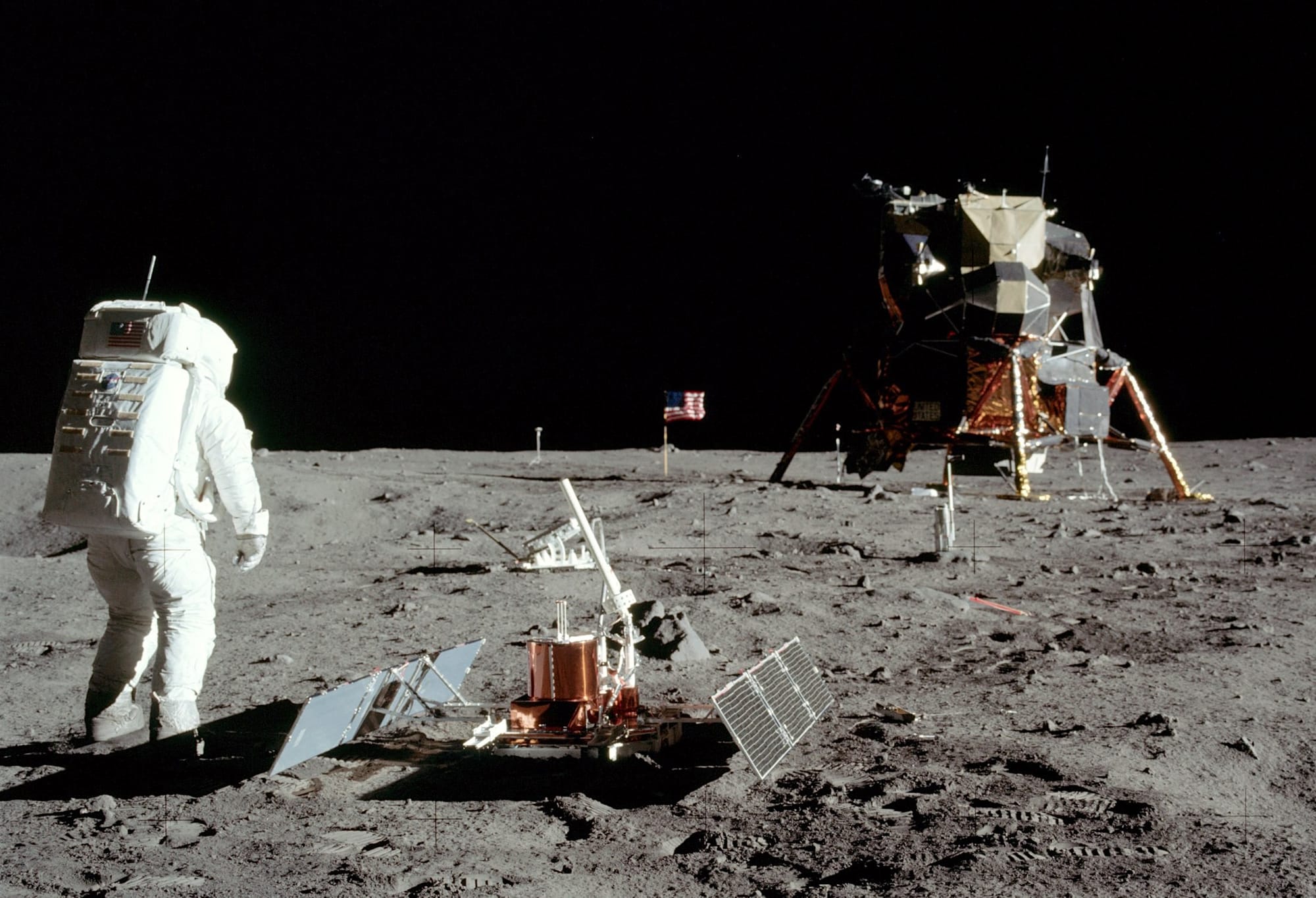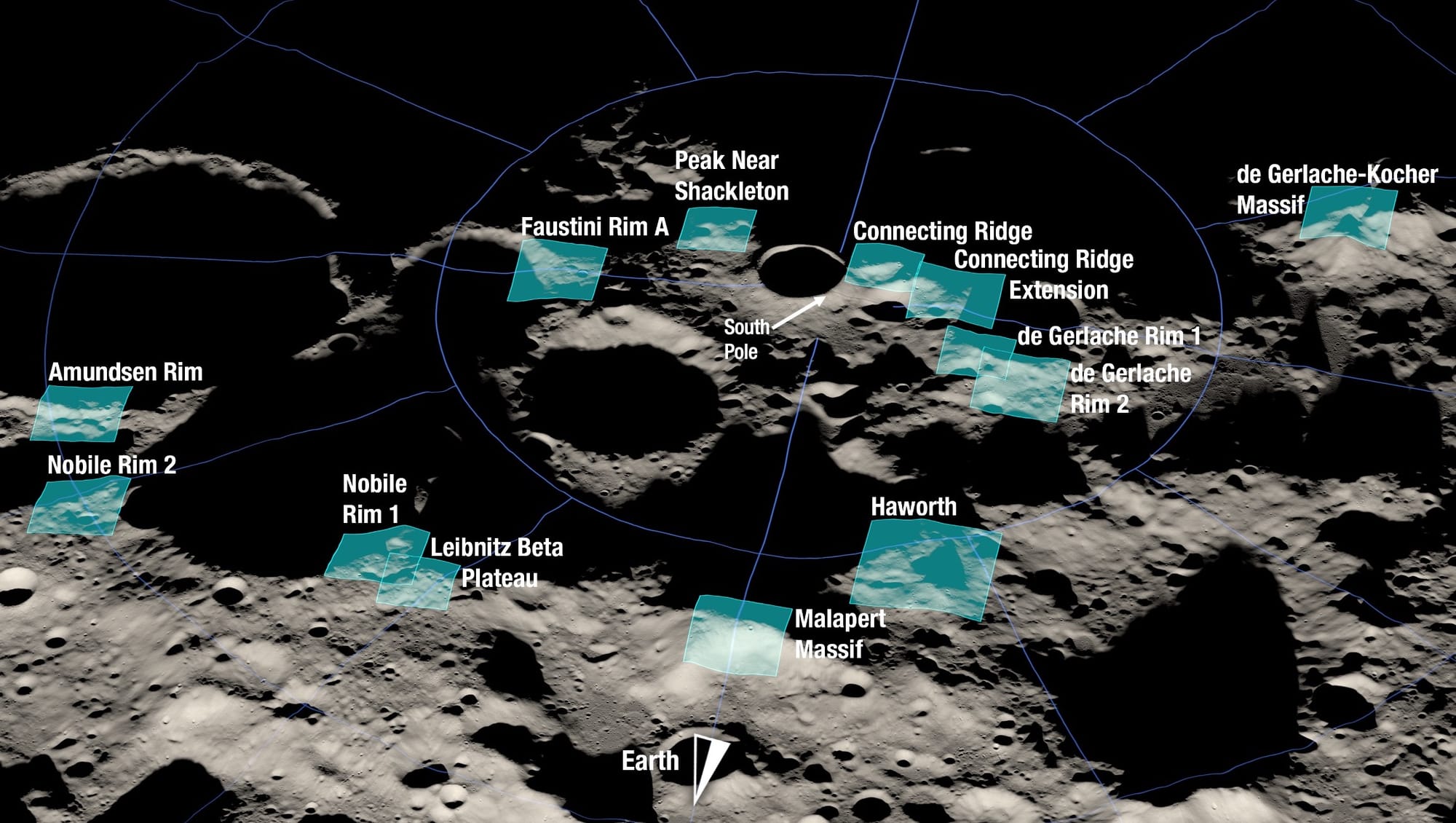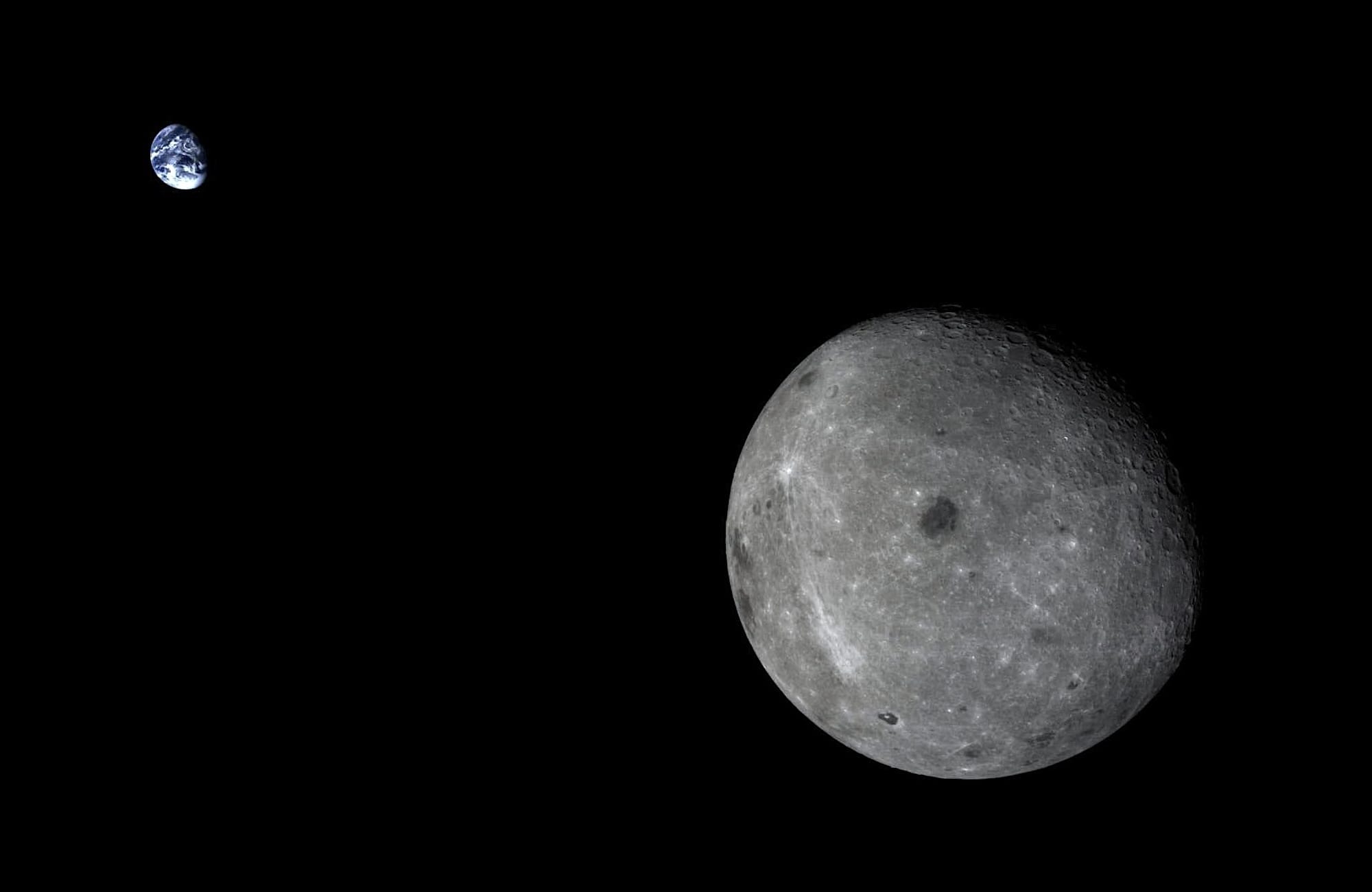Moon Monday #170: Science on Artemis III; ispace and CLPS, and more

NASA selects science instruments to be deployed on the Moon by Artemis III astronauts
In a historic return since Apollo, NASA aims to land astronauts on our Moon again in late 2026 with Artemis III. What science instruments will they carry to deploy on the lunar south pole for advancing our understanding of the Moon much like Apollo did? Following a competitive request for instrument proposals that NASA issued last May for the same, the agency announced on March 26 the first three payloads to be part of Artemis III. These will be deployed by astronauts on the lunar surface during their moonwalks. The experiments are:
- The Lunar Environment Monitoring Station (LEMS), which contains compact, autonomous seismometers designed to monitor local lunar shakes for at least three months. With LEMS data, scientists will try to characterize the structure of the local crust and mantle. Combined with data from the two distinct lunar-night-surviving seismometers on the Draper-led lunar farside mission in 2026 part of NASA’s CLPS program, LEMS will help us better understand the Moon’s internal structure and how it evolved. LEMS will also help us know the rate of seismic activity and amount of micrometeorite impacts on the Moon’s south pole, which will help safely plan future, lengthier crewed missions in the region.
- The Lunar Effects on Agricultural Flora (LEAF), which will investigate how well plants photosynthesize, grow, and adapt in the intense radiation environment on the Moon’s surface, and how the low lunar gravity affects it all. Also see: China’s Chang’e 4 biological experiment and Plants grow in Apollo lunar soil, but barely like it.
- The Lunar Dielectric Analyzer (LDA), which is a JAXA payload to measure exactly how the lunar soil propagates electric fields, which in turn will help scientists better search for and locate water ice and other volatiles crucial to future mission planning.

Timeline of NASA’s Artemis science planning
While the agency’s selection of the SpaceX Lunar Starship lander in 2021 and Axiom spacesuits in 2022—over and above the standard SLS rocket and Orion spacecraft part of every Artemis mission—largely represent the technology stack to be used for Artemis III, the science end has been catching up to it lately. Below is the timeline for all major milestones in Artemis science planning.
- December 2020: The mission’s Science Definition Team laid out their priorities.
- March 2022: NASA revealed the Artemis science structure, comprising an internal Artemis Science Team, an external Geology Team, ~10 Participating Scientists (which will include international researchers), and an Instruments Team.
- August 2022: NASA announced 13 candidate landing zones for Artemis III. The agency has since been soliciting community input to filter said sites but hasn’t yet down-selected a subset.
- March 2023: NASA announced Noah Petro as the mission’s Science Lead.
- May 2023: NASA solicits competing proposals for instruments to be deployed on Artemis III, and with it the selection of the Instruments Team.
- August 2023: NASA announced the 12-person Artemis III Geology Team led by Brett Denevi. The competitively selected team, with a $5.1 million budget, will specify the mission’s science objectives, help plan and optimize the crew’s activities and traverses, and provide sampling strategies for water ice and more lunar materials of interest. The team will also be involved in pre- and post-mission activities such as astronaut training, initial studies of returned samples, and writing preliminary mission science reports.
- March 2024: Where we’re now—NASA announced the first set of experiments to be deployed on Artemis III. Members of these teams will become part of the Artemis III Instruments Team. In Moon Monday #130, I provided more context on NASA’s payload selection criteria for Artemis III.
Note that the Artemis Science Team comprises several NASA researchers common across all Artemis missions to ensure that high-level lunar science goals of the US scientific community are being kept in mind at every stage of Artemis planning. They also interface between each Artemis Geology Team and the rest of NASA.
Many thanks to Epsilon3 and Open Lunar Foundation for sponsoring this week’s Moon Monday. If you love this community resource too, join them!
ispace Japan sells stock to continue work on NASA CLPS Moon landing

Jeff Foust reports that the publicly traded ispace Japan raised $53.5 million through a stock sale to fund development of an upcoming mission as the company continues to face operating losses from the resource intensive nature of Moon missions. About $47 million of said money will be used for Draper’s first Moon mission part of NASA’s CLPS program targeting a 2026 launch, wherein ispace’s US subsidiary is providing the lander called APEX to land on the lunar farside.
In September 2023, ispace US announced a new HQ in Denver, Colorado where the company will manufacture the APEX lander—previously called Series 2. APEX is larger and more capable than the compact Series 1 lander design, which ispace Japan flew on the company’s Mission 1 (M1) last year, and will do so again this year for M2. APEX features 300 kilograms of payload capacity, ten times more than Series 1. Jeff Foust reported in September 2023 that APEX’s structure had to be redesigned primarily to meet the vibrational requirements of the NASA payloads onboard the Draper-led CLPS mission. ispace’s share of the CLPS contract is supposedly $55 million out of $73 million, though the latter is an old number that may have gone up like was the case with CLPS flights of Astrobotic and Intuitive Machines.
In October 2023, ispace Japan announced being awarded a $80 million Japanese government grant to develop and launch a large lunar lander by 2027. It can carry more than 100 kilograms of payload to the Moon’s surface. More details are unclear but ispace calls the new lander design Series 3, which based on its mass class and provided descriptions seems similar to or derived from APEX.
In any case, ispace seems to be on track to launch its second Moon mission (M2) by end of 2024, which is aptly named “RESILIENCE” to reflect the spirited reattempt after M1’s crash.
More Moon

- Defying JAXA’s own expectations once again, the solar-powered SLIM lander managed to reestablish contact with Earth on March 27, surviving the frigid lunar night for a second time. But since conditions around the near-equatorial-noon continue to prove too hot, JAXA is unable to operate scientific equipment on SLIM to continue with some of its leftover mission goals.
- Andrew Jones reports that China raised the orbit of at least one twin satellite last week—whose March 13 launch on a Long March 2C rocket had come as a surprise. It was reported that an upper rocket stage malfunction meant the satellites, called DRO-A and DRO-B, weren’t injected into the intended trajectories to the Moon. China supposedly launched the satellites to demonstrate some autonomous lunar navigation technologies, thus complementing the Queqiao 2 mission launched on March 20. Well, I keep complaining about communications issues with space programs, usually with India and the US, but China is obviously opaque on another level.
- Between December 2023 and March 2024, three more organizations have joined the upcoming China-led long-term scientific base on the Moon’s south pole called the International Lunar Research Station (ILRS): 1) PT Universal Satelit Indonesia (UniSat), 2) the Asociación de Astronomía de Colombia (ASASAC), and 3) Kyrgyzstan’s Arabaev Kyrgyz State University. Andrew Jones helpfully lists all 17 organizations part of ILRS.
- Sponsored listing: Companies building for the Moon can now leverage Epsilon3’s new Automation capability, purpose-built to safely streamline complex spacecraft assembly, integration, testing, and operational procedures. Epsilon3’s web-based platform is used by Blue Origin, Astrobotic, Redwire, Firefly, ispace, and more organizations creating for Luna.
